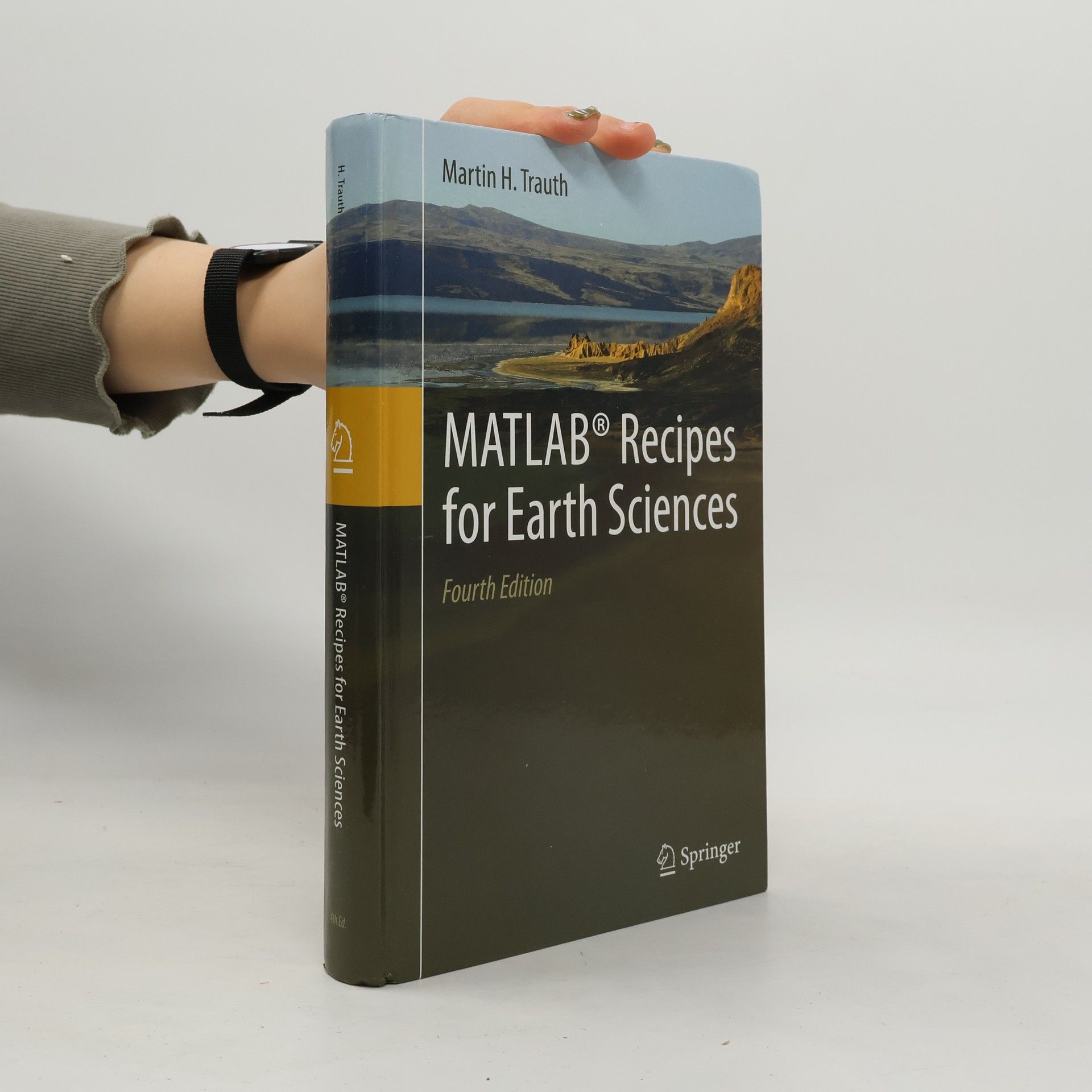MATLAB® is widely utilized in geosciences for various applications, including image processing in remote sensing, digital elevation model generation, and time series analysis. This book presents data analysis methods in geosciences using MATLAB, covering basic statistics for univariate, bivariate, and multivariate datasets, time-series analysis, signal processing, and image analysis. The revised Fourth Edition introduces sixteen new sections and expands most chapters, providing a step-by-step discussion of methods followed by demonstrations using MATLAB functions. New topics include Array Manipulation, Control Flow, Graphical User Interfaces, Hypothesis Testing, and various statistical tests such as the Kolmogorov-Smirnov and Mann-Whitney tests. Additional sections address detecting abrupt transitions in time series, exporting 3D graphics, and processing LANDSAT and TERRA ASTER images, along with image enhancement and shape-based object detection. The text is filled with examples showcasing MATLAB applications on earth science datasets. Supplementary electronic material available online through Springer Link features recipes with all MATLAB commands and example data from the book.
Martin H. Trauth Books






Signal and Noise in Geosciences
MATLAB® Recipes for Data Acquisition in Earth Sciences
- 352 pages
- 13 hours of reading
Focusing on practical applications, this textbook combines MATLAB with affordable data acquisition tools to teach geoscientific data collection techniques. It features 35 hands-on exercises, such as using smartphones for stereo imaging and mineral classification with spectral cameras. Additionally, it covers sound localization with microphones, thermal imaging for surface differentiation, and data streaming via IoT. Supplementary online materials include MATLAB commands, example data, LEGO construction plans, and multimedia resources to enhance learning.
MATLAB® Recipes for Earth Sciences
- 517 pages
- 19 hours of reading
Focusing on MATLAB's application in geosciences, this comprehensive guide covers data analysis methods including statistical techniques for various datasets, time-series analysis, and image processing. The updated Fifth Edition introduces seven new sections, expanding on topics like error analysis and the Normalized Difference Vegetation Index. It features rewritten chapters and practical examples utilizing real earth science datasets. Supplementary online materials provide MATLAB command recipes and sample data, enhancing the learning experience for readers.
Python Recipes for Earth Sciences
- 468 pages
- 17 hours of reading
Focusing on geoscientific applications, this book explores data analysis methods using Python, covering basic statistics, time series analysis, and image processing. It addresses univariate, bivariate, and multivariate data sets, alongside spatial and directional data analysis. Numerous examples illustrate Python's practical use with earth science data. Additionally, supplementary online materials provide example datasets and Python command recipes, enhancing the learning experience for readers interested in applying Python in geosciences.
MATLAB and design recipes for earth sciences
- 292 pages
- 11 hours of reading
The overall aim of the book is to introduce students to the typical course followed by a data analysis project in earth sciences. A project usually involves searching relevant literature, reviewing and ranking published books and journal articles, extracting relevant information from the literature in the form of text, data, or graphs, searching and processing the relevant original data using MATLAB, and compiling and presenting the results as posters, abstracts, and oral presentations using graphics design software. The text of this book includes numerous examples on the use of internet resources, on the visualization of data with MATLAB, and on preparing scientific presentations. As with its sister book MATLAB Recipes for Earth Sciences–3rd Edition (2010), which demonstrates the use of statistical and numerical methods on earth science data, this book uses state-of-the art software packages, including MATLAB and the Adobe Creative Suite, to process and present geoscientific information collected during the course of an earth science project. The book's supplementary electronic material (available online through the publisher's website) includes color versions of all figures, recipes with all the MATLAB commands featured in the book, the example data, exported MATLAB graphics, and screenshots of the most important steps involved in processing the graphics.
Python-Rezepte für die Geowissenschaften
- 496 pages
- 18 hours of reading
Das Buch bietet eine umfassende Einführung in die Anwendung von Python für die Datenanalyse in den Geowissenschaften. Es behandelt grundlegende statistische Methoden, Zeitreihenanalysen, Signalverarbeitung sowie die Analyse räumlicher und bildbasierter Daten. Zahlreiche praxisnahe Beispiele veranschaulichen, wie Python effektiv auf geowissenschaftliche Datensätze angewendet werden kann. Zusätzlich steht elektronisches Material zur Verfügung, das Beispiel-Datensätze und Rezepte für alle im Buch behandelten Python-Befehle umfasst, um das Lernen zu unterstützen.